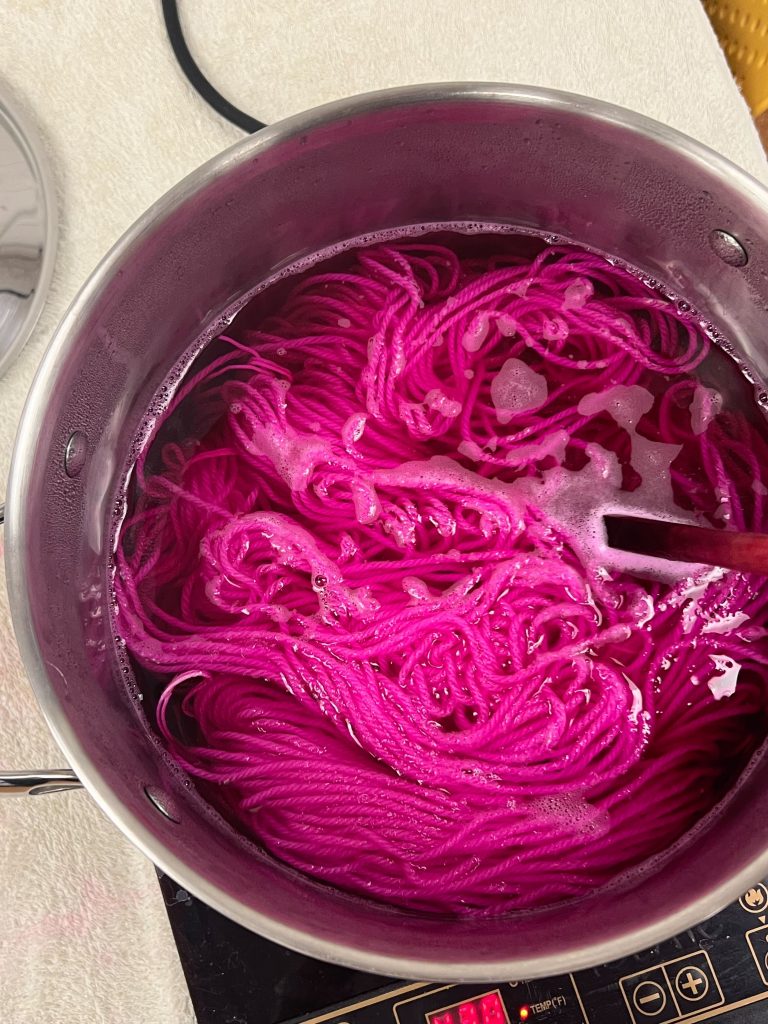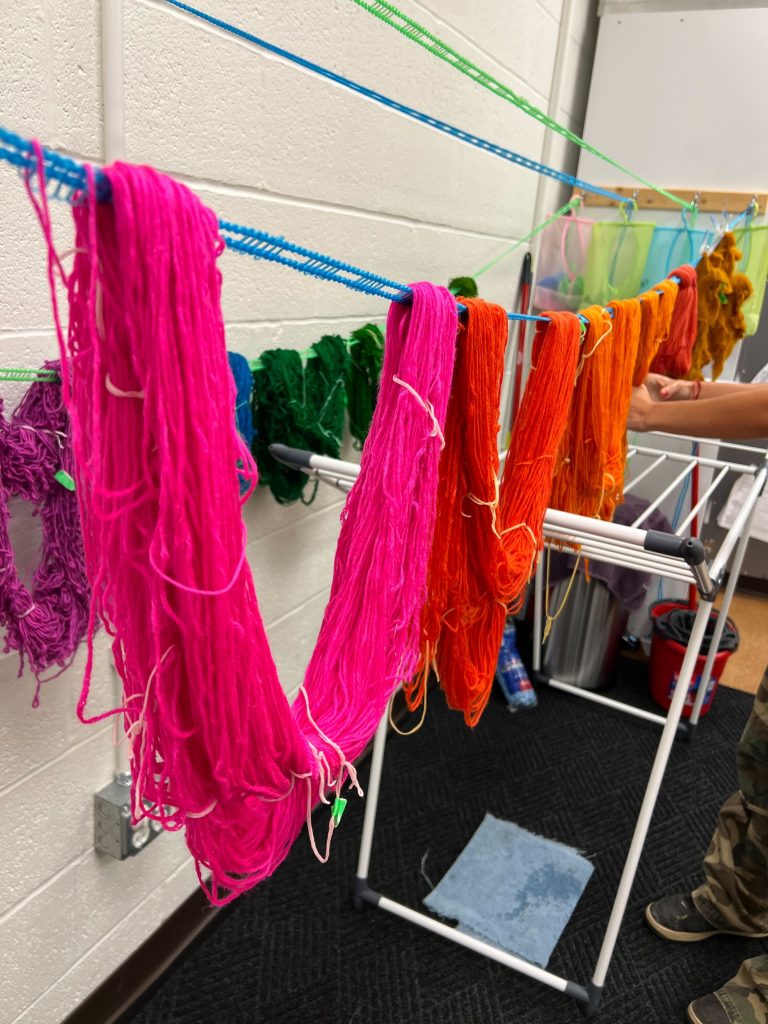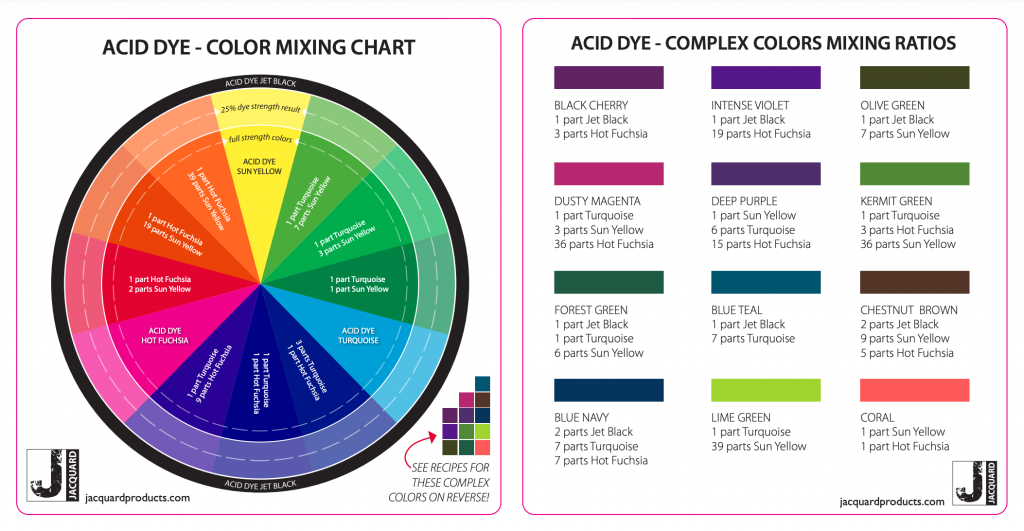Acid Dyed Yarn





Acid Dye Samples:
Each group dyes 3 skeins/hank of yarn (~50-60 grams each) and 2 wool batting/roving (~100-120 grams each):
*1 skein/hank with assigned color (full immersion method; heated in a pot)
*1 skein/hank with created color (using the microwave)
*1 skein/hank multi-colored or speckled (with colors of students’ choosing, using the microwave).
*wool batting/roving with assigned color (full immersion; heated in a pot)
*wool batting/roving with assigned color (microwave method)
Students can make simple proportional adjustments to the mixing ratios assigned to them as long as the adjustments are well documented. Students decide DOS for all colors. Great examples for how to adjust color recipes to get variations can be found in this blog.
group 1: Lela, Audrey, Angela
black cherry, intense violet, olive green + create a color + multi-color
group 2: Sherry, Connie, M
dusty magenta, deep purple, kermit green + create color + multi-color
group 3: Sarah, Yu Hong, Ava
forest green, blue teal, chestnut brown + create color + multi-color
group 4: Cameron, Even, Amy
blue navy, lime green, coral + create color + multi-color
Calculating Stock Solution and Citric Acid:
1. Record the weight of fiber for each skein/roving color sample
2. Wet out the fiber. All fiber must be wetted out for 30 minutes with a drop of liquid soap
3. Decide on the DOS
4. Use Immersion Dyeing pdf handout to calculate the total amount of Stock Solution in mL needed
5. Use the handout to calculate the total amount of citric acid/fixer
6. Use the color recipe proportions to calculate the amount of specific dyes in mL (Hot Fuchsia, Turquoise, Sun Yellow, Jet Black)
example:
amount of fiber to dye: 100 grams
color recipe proportion: 1 part hot fuchsia, 2 parts sun yellow
desired DOS is 2%: 2% desired DOS x 1% stock solution = factor 2
overall amount of dye needed in mL for 2% DOS: 100 grams fiber x factor 2 = 200 ml stock solution
citric acid/fixer: 100 grams x .15 = 15 grams
Use proportions calculator to calculate the amount of each dye for a total of 200 mL
1 part hot fuchsia: 67 mL
2 parts sun yellow: 133 mL
prepare skeins for dyeing figure 8 ties
how to open a skein of yarn, umbrella swift, ball winder
Immersion Dyeing pdf with 1% Acid Dye Stock Solution(pdf with step by step instructions used in class demo)
Note: we will not scour (clean) the wool yarn and roving that we are dyeing. For future reference, the scouring process is outlined here. Scouring is the cleaning of fibers (protein and cellulose) from grease and sizing starches used in the weaving of textiles. The wool yarn and roving available to us is sufficiently clean to accept the acid dyes.
History of dyes
history of dyes
a brief history of the invention of modern color
In Search of Forgotten Colours – Sachio Yoshioka and the Art of Natural Dyeing
Extras
acid dye trouble shooting
dyeing wool roving
dyeing yarn basics and beyond (a wonderful compilation of videos from Essence of Autumn Yarn).
*The Basics Of Hand Dyed Yarn (Part 1) – Protein Fibre Yarns
*The Basics Of Hand Dyed Yarn (Part 2 Section 1) – DYE
*The Basics Of Hand Dyed Yarn (Part 2 Section 2) – ACID
*The Basics Of Hand Dyed Yarn (Part 2 Section 3) – HEAT
speckled yarn